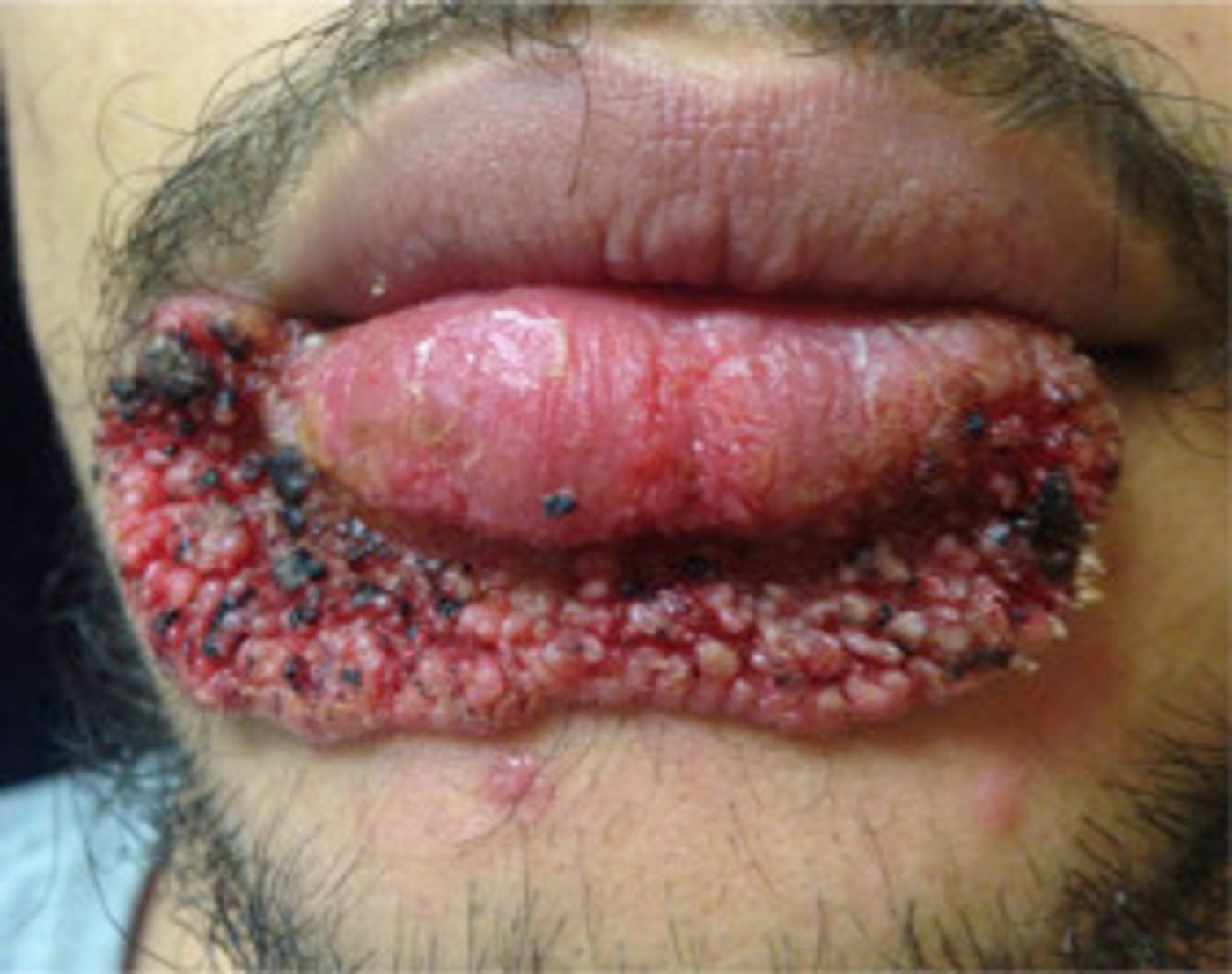Don't Lance a Zit with a Woodworking Blade!
Pimples are unsightly, annoying blemishes that seem to show up at the worst possible time. Many of us probably to fight hard to conceal a zit that popped up overnight just in time for school pictures or other social engagements.
Experts say it’s best to let the zit heal on its own, but many of us probably just couldn’t resist picking at it, in hopes of expediting the exit of the unwanted guest on our face. But surely everyone would rather bear an unsightly zit over a painful fungus infection, right? Unfortunately, one young man had to experience this lesson the hard way.
The young man, 23, worked in construction. According to his account, the man “snipped” what he thought to be a pimple on his lower lip with a woodworking blade. Not only did the pimple not go away, it transformed into a painful, swollen, blood-encrusted lesion over the course of the next seven months. As the lesion was progressively getting worse, the man finally sought medical help.

When the doctors did a skin biopsy on the lesion, they found a rare culprit: the Blastomyces fungi.
The Blastomyces fungus is common in the environment, but particularly abundant in moist soil and decomposing organic materials. In this way, the fungi poses threats to human health when the spores in the soil are inhaled into the lungs, causing primary pulmonary blastomycosis. According to the report, “soil exposure is the greatest risk factor and there is no predilection for sex, race, occupation, or season.”
In the case of the 23-year-old construction worker, doctors think the fungus likely came directly from the woodworking tool he used to dispatch the pimple. Construction tools are often exposed and rarely cleaned, which makes a Blastomyces contamination feasible. Then, when the man used the contaminated blade on his lip, he unknowingly transferred the fungi on to his skin and into his body.
Of note, the man denied the common flu-like symptoms typically associated with blastomycosis, including fever, cough, and chills. Rather, symptoms were localized to the lesion on his lip. Doctors think this is consistent with the mode of Blastomyces transmission, whereby he didn’t inhale the spores but had direct exposure to his lip. Furthermore, additional laboratory workups did not reveal other potential culprits.
The man was diagnosed with primary cutaneous blastomycosis, a rare instance when the Blastomyces fungus enters the body through an injury to the skin. According to the report, fewer than 50 cases of this type of infection have been reported. Fortunately, after two weeks of treatment with itraconazole, an antifungal, doctors reported the man showed significant clearance of the lesion.
Additional sources: Live Science









